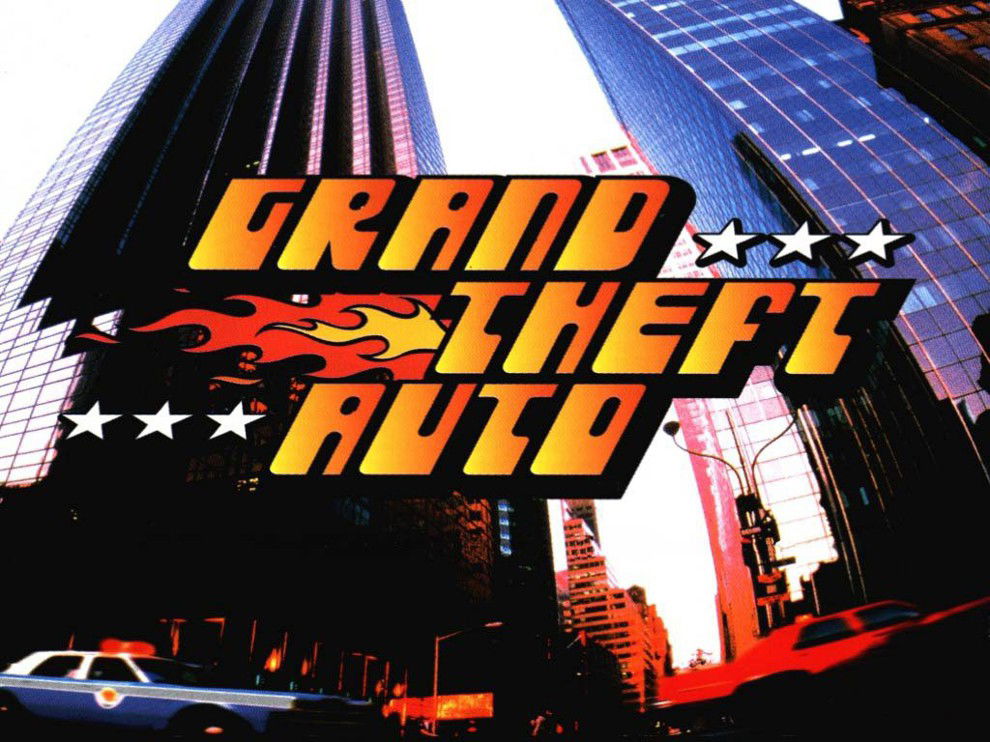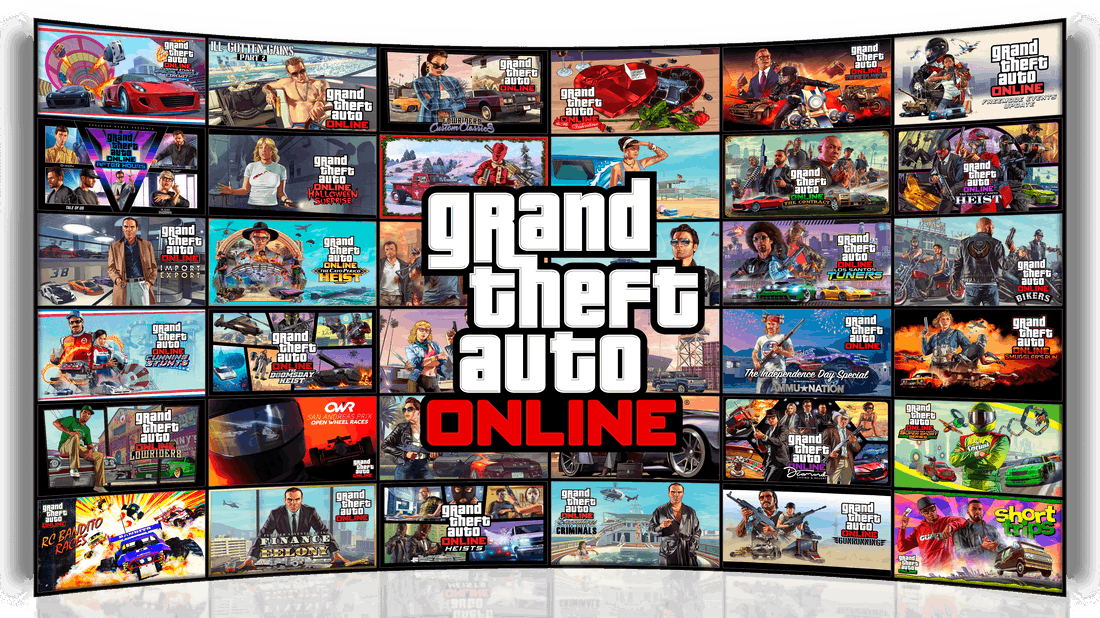The Grand Theft Auto franchise, or GTA, is the kind of game you hardly ever play. The freedom offered by the game's cities, the thousands of streets, cars, NPCs, weapons, and cheat codes that allow you to play with virtually every aspect of the game.
Making the entire world lose gravity, flooding everything, drying up the oceans, spawning a fighter jet, or flying freely across the map distracts you greatly from the main mission. And perhaps this freedom and the quality of the game created by Rockstar Games explain why the series didn't become a success by accident.
Success stemmed from the accumulation of design decisions, technological context, business choices, and social phenomena that reinforced each other over decades. When a story about simply getting cars from point A to point B became something that gave you the chance to explore huge maps and a deep story filled with unforgettable characters like CJ.

So, let's elaborate on the elements that made the franchise an icon of the industry and pop culture: the technical and design leap, the unique identity of the games, the controversy that generated public attention, the economic model that prolonged its useful life, and the community (mods, roleplay, streaming) that recycled the game into constant content, and if you have any questions, leave a comment.
The GTA Series
Grand Theft Auto is a game series that has evolved over generations. Beginning with the original Grand Theft Auto (1997) and GTA 2 (1999), the franchise already demonstrated its core idea—freedom in urban environments and the idea of stealing vehicles—but it was in 3D, with GTA III (2001), that the concept exploded in scale and impact. GTA III was the technical and cultural watershed: it took the series to a new dimension and enabled what we now know as the modern "open world."
Then came titles that refined the formula and gave identity to different eras and aesthetics: Grand Theft Auto: Vice City (2002) with its eighties aesthetic and very strong soundtrack; Grand Theft Auto: San Andreas (2004), which expanded the map, blended social drama and pop culture, and became a phenomenon in its own right; and later Grand Theft Auto IV (2008), which brought a more serious tone and a technical leap to the PS3/Xbox 360 generation. Each of these releases brought gameplay innovations and strengthened the Rockstar idea—the dark humor, the musical curation, and the attention to environmental details.

Alongside the main titles, the series has had significant variations: expansions and episodes tied to GTA IV (such as The Lost and Damned and The Ballad of Gay Tony), portable games and experiments like GTA: Chinatown Wars (2009)—which demonstrated that the franchise could be reinvented for other platforms and audiences—and reissues/remasters (the remastered trilogy was re-released in 2021/2023). These variations have kept the catalog alive and accessible to new generations, expanding the franchise's installed base.
The commercial pinnacle to date is Grand Theft Auto V (2013). Released for a later generation of consoles and subsequently distributed widely, GTA V not only sold tens of millions of copies but also sustained an online ecosystem—GTA Online—that transformed the game into a platform service. This marriage of premium product (single-player) and ongoing service (multiplayer with paid content) made GTA V a lasting revenue generator and kept the franchise at the center of the market for years. Specialized reports and coverage document these massive sales and the decisive role of online platforms in the title's longevity.
The series as a whole has sold hundreds of millions of copies since the 1990s—a direct indicator of its cultural reach. This numerical legacy provides the brand with financial resources and visibility that fuel everything else: large voice casts, top-notch music curation, technical updates, and marketing campaigns that reach beyond the traditional gaming audience.
Finally, the sequence of titles demonstrates two essential aspects of the phenomenon: first, Rockstar's ability to reinvent and adapt the series with each platform leap; second, the slow and cumulative construction of a recognizable brand. When we talk about GTA today, we're not just talking about one game—we're talking about a historical line that begins in 1997 and continues through re-releases, expansions, and announcements of future entries in the franchise, each fueling the series' fame.
The leap into 3D and freedom
In Grand Theft Auto III (2001), the game transitioned from a top-down title to a third-person view in 3D and a fully open world. This wasn't exactly new; there were already games with open maps, but few experiences so beautifully combined a living 3D world, traffic, pedestrians, and missions with the freedom for the player to act outside the script. GTA III transformed this possibility into an accessible commercial product for consoles—and, in doing so, changed the public's expectation of what a game could be: no longer a sequence of levels, but a "place" to explore.
This sense of freedom—taking a car, driving without a script, experiencing consequences outside the main plot—opened space for emergent experiences: players created stories, challenges, and games within the game world, increasing retention and word of mouth. This paradigm shift is often cited as a milestone in game design.
The initial success—especially the transformation applied by GTA III—also had to do with timing. The transition to more capable consoles (larger memory, DVD media, better 3D processors) coincided with Rockstar's vision of creating living cities. If the hardware hadn't kept up, the experience wouldn't have been as fluid and compelling.
Furthermore, the migration to digital platforms, game streaming services, and social media has boosted the reach of communities and content creators, preserving and multiplying GTA's appeal.
Commercial scale and revenue model
Having a great game, like III, IV, and San Andreas, is different from turning that game into a profitable platform like GTA V. The game is a case study: in addition to massive initial sales, the online mode (GTA Online) created a continuous revenue stream through post-launch content and microtransactions. The publisher, Take-Two, made it clear in its reports that titles like GTA V and GTA Online continue to be major contributors to its recurring revenue.

This model—selling a premium product and then monetizing it with updates, passes, and virtual items—kept the franchise financially active and allowed for continued investment in marketing, support, and porting to new platforms. In other words, GTA didn't need to release a new game every year to maintain market dominance—it simply needed to update the existing game.
Visible scale in numbers
The numbers reinforce the narrative: GTA V/Online sales and revenue consistently appear in Take-Two's reports as pillars of its financial statement. More than symbolic milestones, these figures explain the studio's ability to maintain updates, pay actors, expand teams, and, above all, continue to convert attention into revenue—which feeds back into the popularity cycle. (Official company reports and specialized press coverage make this clear.)
Own identity
However, Rockstar didn't enter the market solely with mechanics. From the outset, the company invested in scriptwriting, voice acting, art direction, and the development of an editorial tone (bitter satire, memorable characters, dark humor). These elements function as signatures: when players open up GTA, they immediately recognize an authorial voice.
Musical curation—in-car radios with announcers, playlists, and satirical ads—transformed the soundtrack into a narrative element that helps build the atmosphere of fictional cities. This combination heightened the perception of value: more than just "a cops and robbers game", GTA came to be seen as a dense game, rich with layers of cultural context, particularly related to the Black and Latino population in the United States.
Controversy and sales
The series has always dealt with adult themes: explicit violence, parodies of institutions, and crime. From its original title in the 1990s to more recent episodes, GTA has generated controversy—reports, debates about censorship, and even bans in some markets. This negative visibility often translates into curiosity: alarming stories in mainstream media about how games are responsible for violence among young people, and headlines that attract viewers and lead new players to try the game to understand what generated such a stir.
It's important to emphasize that the controversy alone doesn't explain its success, but it has amplified the brand's exposure for years. The journalistic documentation of these episodes is extensive and demonstrates how public debate helped keep GTA on the agenda.
Mods, roleplay and streaming
What took GTA beyond the normal release cycle was the way the community transformed the game into raw material. Mods—fan-created modifications—have always given the game continuous variation. In recent years, the emergence of roleplay servers (like NoPixel and others) has transformed GTA Online into a kind of digital "improv theater": players roleplay, create long-form narratives, and attract massive audiences on streaming platforms.
This phenomenon has transformed the product into live entertainment; it's not uncommon to see viewership spikes when famous streamers join RP servers, and this content generates clips, memes, news reports, and renewed interest in the game. The impact of this is measurable: GTA V became one of the most-watched games on platforms like Twitch years after its release—a powerful indicator of continued relevance.
Why does the combination work?
It's important to understand that none of the above factors alone explains the phenomenon. A controversial game without a design that sustains the experience dies quickly. A technically innovative game without post-launch support loses traction. GTA benefited from a combination of design innovation (a compelling open world), editorial identity (script, humor, sound), public attention (controversy), a robust business model (sales + recurring revenue), and a community that reinvented the game as social content. These elements act like interconnected gears—each enhances the reach of the other. The result is what we see: a product that has become a cultural platform with a lasting impact.
However, two observations frequently appear. First: "GTA sells so much just because it's controversial". No. Controversy builds reach, but retention and recommendations come from gameplay and the experiences players have within the game world. Second: "Without a new GTA, the franchise would die". Experience has shown otherwise: with GTA Online, Rockstar maintained relevance for over a decade, even without a new single-player game to replace GTA V as its main revenue generator. Both misconceptions tend to underestimate the complexity of the cycle that sustains the franchise.
Despite the hype surrounding GTA 6, the controversies surrounding the protagonists' issues (especially the Latina women) aren't driving pre-orders. Another issue is the potential price, with predictions that the game could cost up to over $150. It's unlikely the game will reach that price in its base version, but it certainly won't be cheap.
Conclusion
GTA became a phenomenon because it brought together—at the right time and in a sustained manner—innovative design, a unique tone, financial strength, and a community ecosystem that transformed the game into social content. The controversy helped amplify visibility, but it didn't create success: success was built on products that gave players real freedom, economic support that kept the franchise active, and a community that reinvented the game as a platform for continuous entertainment. These combined elements explain why, in addition to selling well, GTA entered the global cultural repertoire so profoundly.











— Comments 0
, Reactions 1
Be the first to comment